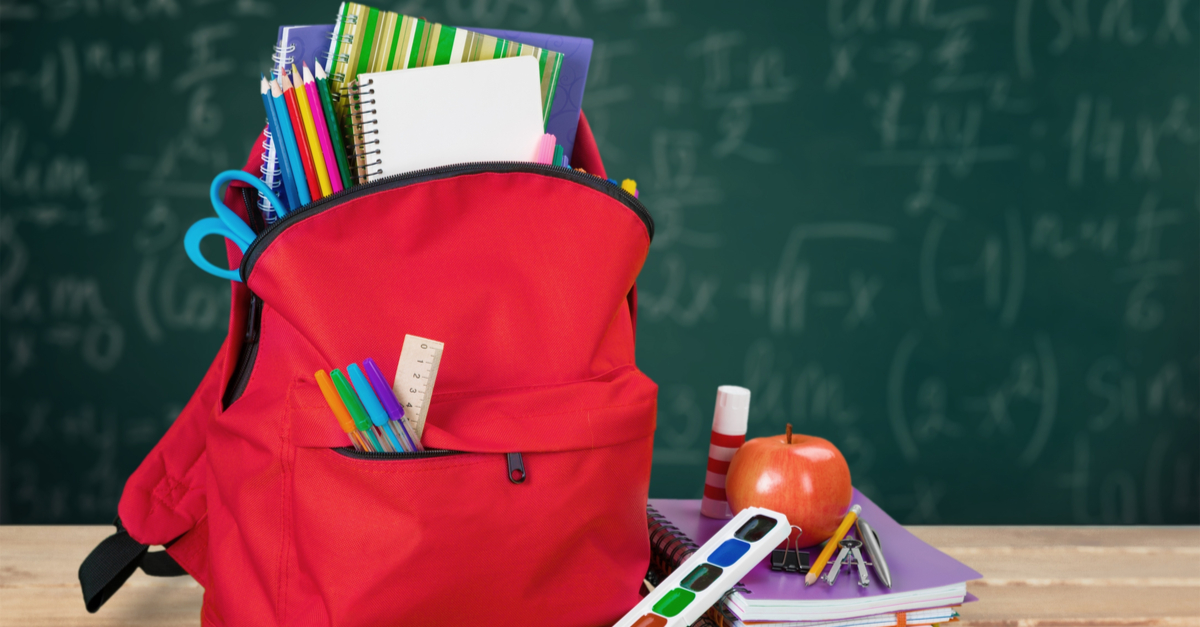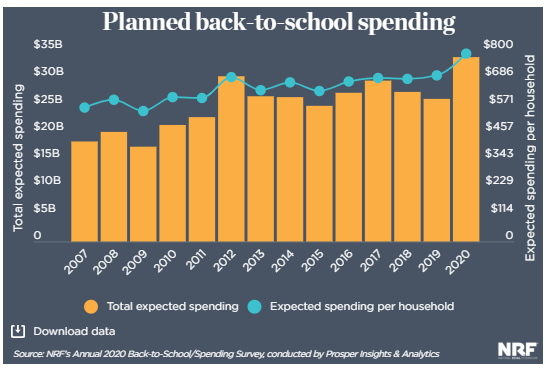It’s August and parents and students everywhere are preparing to return to school, but one question looms large: what should they prepare for? As distance learning is implemented in some form or fashion for many schools across the country, typical back to school shopping looks very different—like most things this year. Here’s what other parents are doing to prepare their children to learn.
What do we usually see?
The National Retail Federation (NRF), the world’s largest retail trade association, gathers data from back to school shoppers in an annual “back-to-class” survey. In recent years, the back to school supply industry has seen record spending each year. Consumers are spending billions more each year as schools require an ever-increasing list of supplies.
In 2015, surveyed shoppers spent an average of $97.74 on supplies, defined as “notebooks, pencils, backpacks and lunch boxes.” This number was $107.76 in2016, $114.12 in 2017, $122.13 in 2018 and $117.49 in 2019. In 2020, the expected average for traditional school supplies is $131.37, that’s up from $117.49. Still, parents want to know—what does back to school prep look like this year?
What’s the trend this year?
In years past, back to school shopping lists included skinny jeans, cellphones and new backpacks. Now, they’ve likely exchanged a few pairs of jeans for masks and hand sanitizer or a family computer. Deloitte, one of the largest professional service networks in the world and one of the “Big Four” accounting companies alongside Ernst & Young, PricewaterhouseCoopers and KPMG, surveyed more than two-thousand parents about back to school shopping at the beginning of June.
The results showed that parents are spending more money on computers and hardware than ever, with households averaging a $395 spend, marking a 38% increase year over year over year. Simply put, in a world where children are physically attending school in a limited fashion, families want to make sure that their hardware is ready to go and their child’s learning will be set up for success. Parents’ fears are valid; they don’t want to skimp on the technology they may need if things take a turn for the worse and their students have to return home, but doing little digging sheds some light on what supplies you’ll need at home.
What should you do?
What should your back to school shopping cart look like in an e-learning environment? We can’t tell you that, but what we share is that you shouldn’t forget paper and a pencil. While older students may be tempted to take notes on a computer while they watch video lectures, data shows that they can retain more information and learn more effectively by writing notes by hand.
The Heching Report, an online journal dedicated to innovation and inequality in education, interviewed Virginia Clinton, a professor of education at the University of North Dakota. As e-textbooks became a viable classroom option, Clinton began allowing her students to purchase either the physical or e-book version, but soon learned that many from her classes preferred paper. As a result, Clinton began to research reading comprehension, particularly where paper vs. screens were concerned and shared what she learned.
Clinton says that “Screen readers consistently overestimated their reading comprehension. Paper readers were more accurate in their self-judgments. The excessive confidence of screen readers is important because people who overestimate their abilities are likely to put in less effort. The less effort a person puts into a reading passage, the less they are likely to comprehend. That’s because reading comprehension, like all learning, isn’t easy and requires work.”
While learning ultimately comes down to preference, students do perform better when printouts and paper are incorporated into their lesson plan. If you’re worried about the quality of learning your children are receiving at home, then make sure you do everything you can to maximize what they get out of their lessons, including stocking up on paper.




Discussion